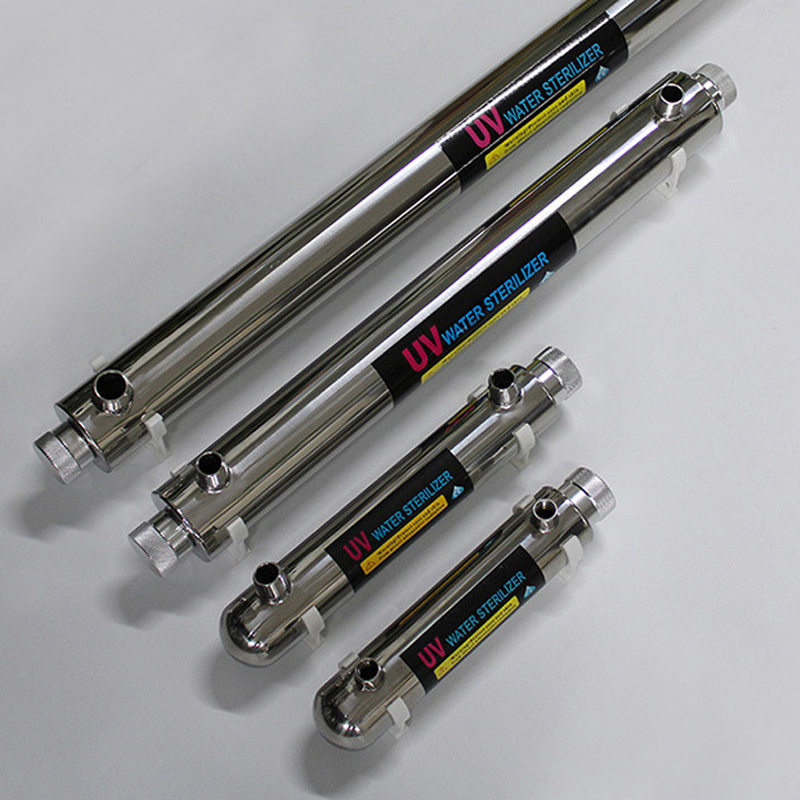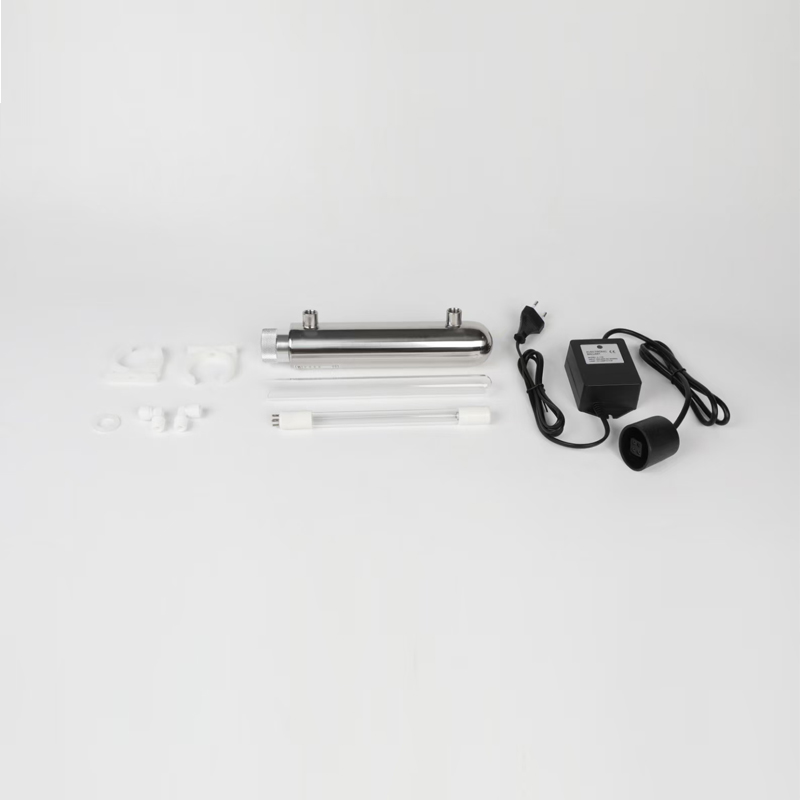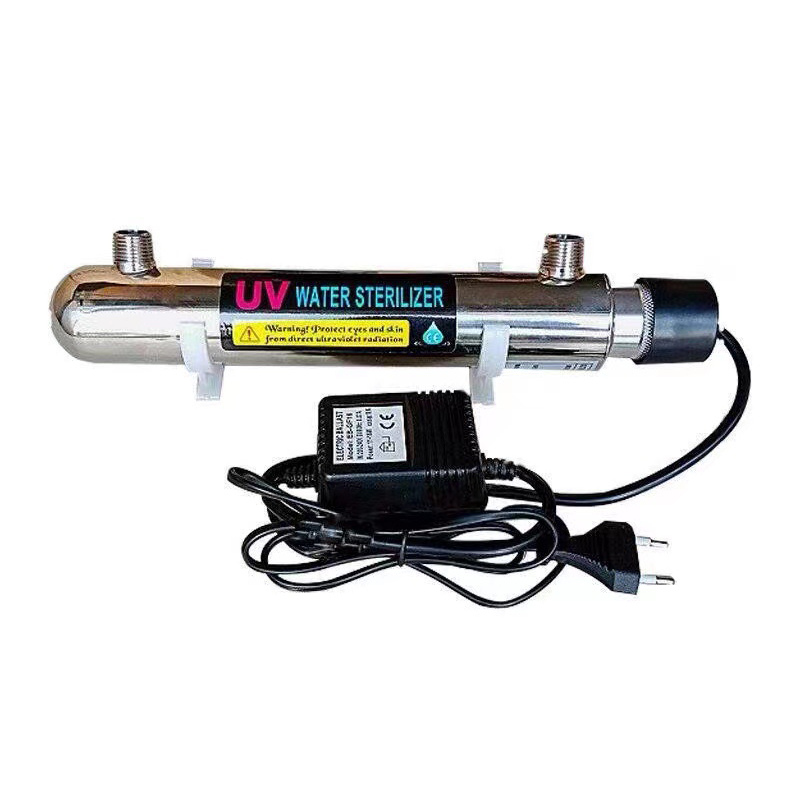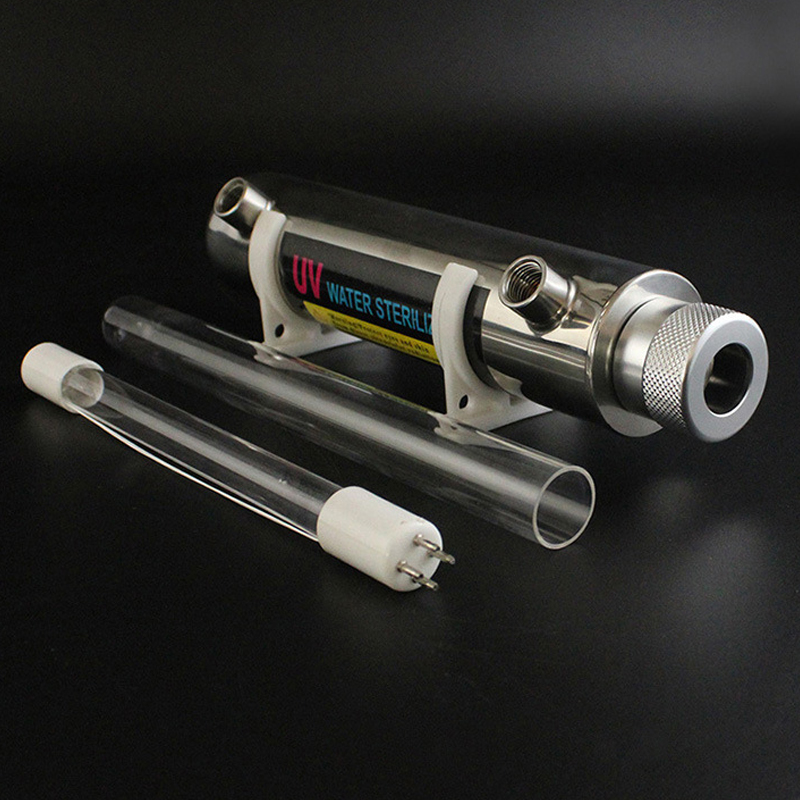



0vercurrent ultraviolet sterilizer UV 304 316L
The main body of the overcurrent ultraviolet sterilizer is made of 304L or 316L stainless steel both inside and outside. The internal and external parts of the main body are polished to enhance ultraviolet radiation, ensuring that the disinfected material will not have incomplete disinfection and sterilization during the disinfection and sterilization process.
The sterilization principle of ultraviolet sterilizers is to use the energy of ultraviolet photons to break down the DNA structure of various viruses, bacteria, and other pathogens in water.
The main purpose is to break various structural bonds in DNA or undergo photochemical polymerization reactions, such as dimerization of THYMINE in DNA, thereby causing various viruses, bacteria, and other pathogens to lose their ability to replicate and reproduce, achieving the effect of sterilization.
The ultraviolet sterilization band is mainly between 200-300nm, with the strongest sterilization ability at a wavelength of 253.7 nm. When various bacteria and viruses in water or air pass through the area of ultraviolet radiation (253.7nm wavelength), ultraviolet radiation penetrates the cell membrane and nucleus of microorganisms, destroys the molecular bonds of nucleic acids (DNA or RNA), causing them to lose their replication ability or activity and die, thereby killing all bacteria and viruses in water or air without using any chemical drugs.
UV disinfection technology is the latest generation of disinfection technology that emerged in the late 1990s internationally. It integrates optics, microbiology, electronics, fluid mechanics, and aerodynamics, and has the characteristics of high efficiency, broad-spectrum, low cost, long lifespan, large water volume, and no secondary pollution. It is internationally recognized as the mainstream disinfection technology of the 21st century.
